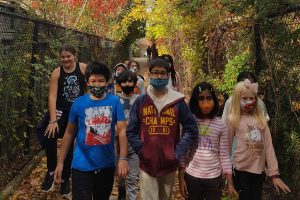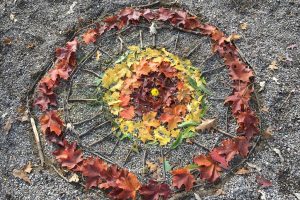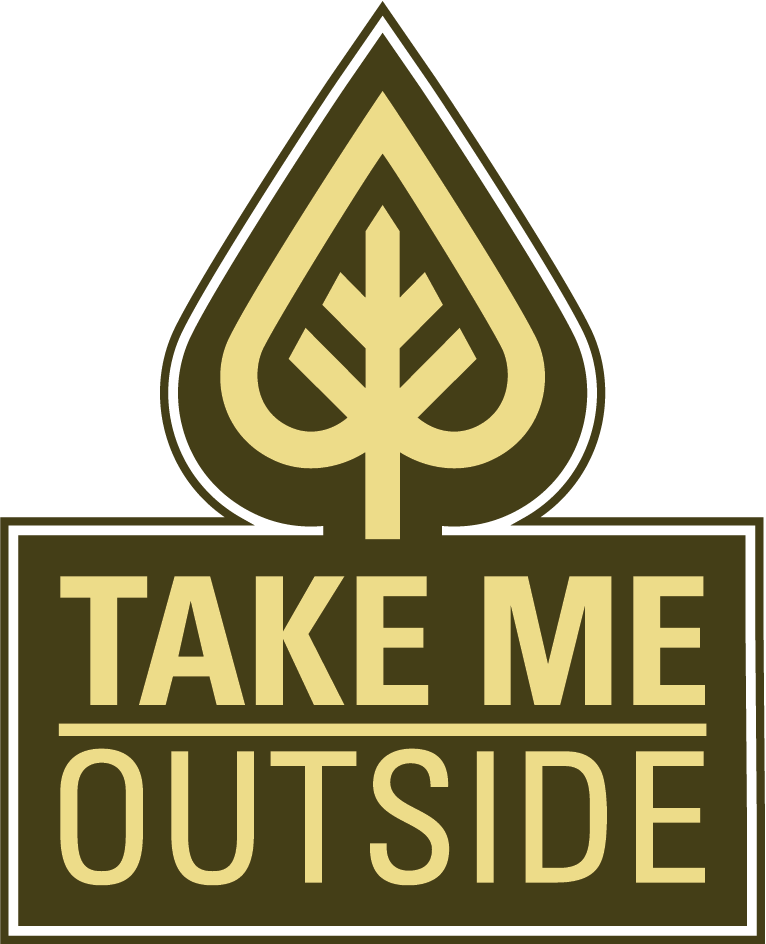December Take Me Outside for Learning Challenge Resources
Fox Walking
All Ages; especially beneficial for building in self-regulation and fine motor skills and control in all learners.
Curricular Areas: Careers, Physical Health Education, Arts Education, Science
Most fox walking sessions begin with a question such as “how many of you like to see wildlife? Who would like to learn how to get close to wild animals?” Next it is time to demonstrate how to fox walk. The first step is to completely relax the body and slowly relax the mind, gently bend your knees, and step forward slowly with one foot leading with your toes. As you set your foot down the goal is for this to be silence make sure to choose your placement wisely and gently begin to bear weight on that foot without making any sound.

Continue like this silently lifting and allowing your feet to return to the earth. One thing that is integral to developing a perfect fox walk is to hold your head nice and steady (do not bob up and down as you typically would). After demonstrating this skill in front of your learners, get them to test it out. A great challenge to culminate the fox walking learning cycle is to try to walk silently as foxes down a trail, and get your group of foxes to listen/ watch for wildlife, the more silently you move the more likely you are to see them. Like every activity you do outside the beauty and the learning outcomes can always shine through in your debrief or what direction this takes you once you return to your classroom setting.
Variations: Have a fox walking competition where everyone tries to maintain speed while not making any sound while moving; try to fox walk in a variety of environments: grass, crunchy fall leaves, salal, snow etc. How can you adapt your walk to these places?
Marche du Renard
 À la fois mouvement et état d’esprit, la marche du renard encourage les mouvements délibérés, le ralentissement et le calme Intérieur. Il consiste à détendre complètement le corps et l’esprit, à plier doucement les genoux et à avancer lentement le pied, les orteils en premier. Le but est de marcher dans un silence complet, en plaçant soigneusement vos pieds tout en gardant la tête haute, stable et les yeux tournés vers l’avant. Une fois que tout le monde s’est pratiqué, vous pouvez terminer l’activité en mettant tout le monde au défi de marcher silencieusement comme des renards sur un sentier, et amener votre groupe àécouter / observer la faune; plus vous bougez silencieusement, plus vous avez de chances de les voir.
À la fois mouvement et état d’esprit, la marche du renard encourage les mouvements délibérés, le ralentissement et le calme Intérieur. Il consiste à détendre complètement le corps et l’esprit, à plier doucement les genoux et à avancer lentement le pied, les orteils en premier. Le but est de marcher dans un silence complet, en plaçant soigneusement vos pieds tout en gardant la tête haute, stable et les yeux tournés vers l’avant. Une fois que tout le monde s’est pratiqué, vous pouvez terminer l’activité en mettant tout le monde au défi de marcher silencieusement comme des renards sur un sentier, et amener votre groupe àécouter / observer la faune; plus vous bougez silencieusement, plus vous avez de chances de les voir.
Pour tous les âges; particulièrement bénéfique pour encourager l’autorégulation et le contrôle.
Matières: carrières, éducation à la santé physique, éducation artistique, sciences.
Cliquez ici pour plus d’activités de sensibilisation à la natureCivilizations
All Ages; increasing complexity and guiding prompts for more mature audiences.
Curricular Areas: Careers, Applied Design Skills and Technologies, Social Studies
This is very likely one my most favorite outdoor learning activities as it is incredibly forgiving and adaptable to many subject areas and it also builds divergent thinking skills. You can even adapt this to do it indoors if the weather prevents you from going outside. The guiding question I typically use in this activity is “How might a community look and what features would it have if you were the one to design it?”. Once you ask this question get learners to think about this, then discuss in pairs and finally share out to the larger group. If at this stage more ideas are needed you can prompt them to consider who would live in this community, what rules or forms of government or leadership exist in this community, how do people get around in this community, what materials are used to construct it… etc. Once they have had the chance to think critically about a community, get them to construct their community either solo or in small groups out of natural materials. This could be building out of snow, and you could bring natural dyes to add color to the snow, or this could be out of whatever down fallen natural materials exist in the area you visit. Once all learners have had the chance to construct their communities do a gallery walk to each one and have the learners who created the community present on the variety of elements they have considered and reflected on while building.
you can prompt them to consider who would live in this community, what rules or forms of government or leadership exist in this community, how do people get around in this community, what materials are used to construct it… etc. Once they have had the chance to think critically about a community, get them to construct their community either solo or in small groups out of natural materials. This could be building out of snow, and you could bring natural dyes to add color to the snow, or this could be out of whatever down fallen natural materials exist in the area you visit. Once all learners have had the chance to construct their communities do a gallery walk to each one and have the learners who created the community present on the variety of elements they have considered and reflected on while building.
Variations: Make these explicit to the course you are trying most to incorporate into this activity.
Civilisations
Cette activité est incroyablement indulgente, s’adapte à de nombreux domaines et développe des capacités de réflexion divergentes. Commencez par amener  vos étudiants à réfléchir de manière critique sur une communauté et ce qui la compose à travers quelques questions suggestives, par exemple : Si tu planifiais une communauté a ton gout, a quoi pourrait ca ressemblerait et qu’est-ce que tu inclurais ?
vos étudiants à réfléchir de manière critique sur une communauté et ce qui la compose à travers quelques questions suggestives, par exemple : Si tu planifiais une communauté a ton gout, a quoi pourrait ca ressemblerait et qu’est-ce que tu inclurais ?
Une fois que cela a été discuté (cela peut se produire à l’intérieur), demandez-leur de construire leur communauté individuellement ou en petits groupes à partir de matériaux naturels à l’extérieur. Ensuite, faites une promenade en classe et discutez de ce qui a été construit et pourquoi.
Matières: études sociales, carrières, compétences en conception appliquée et technologies.
Mieux adapté à la 6e année et plus.






SPIERS021
January 3, 2021 (8:03 pm)
Thank you!!1